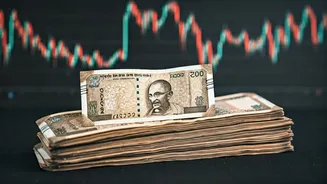GST Receipts Surge
October's Goods and Services Tax (GST) receipts witnessed a noteworthy upswing, registering a 4.6% increase compared to the same period the previous year.
This growth indicates a continued strengthening in tax revenues, reflecting both economic expansion and improvements in tax collection efficiency. GST, which consolidates various indirect taxes, plays a vital role in funding infrastructure projects, social welfare programs, and overall government expenditure. The sustained rise in GST revenue suggests that economic activities, including manufacturing, trade, and services, are performing well. This positive trend contributes to a more robust fiscal position for the government, enabling it to better manage its budget and support various development initiatives across the nation. The consistent growth in GST collections further underscores the significance of the GST regime in India’s evolving financial landscape.
Urban Company's Financials
Urban Company, a prominent player in the services sector, reported a loss of Rs 59.3 crore in the second quarter. The loss highlights the financial challenges that the company has been facing during this period, possibly due to a variety of factors such as increased operational expenses, fierce market competition, or strategic investments in expansion. The company provides a variety of services, including home maintenance and beauty, and the financial performance reveals the dynamics within this competitive industry. The loss could prompt Urban Company to reassess its strategies, focusing on measures to streamline its operations, optimize costs, and enhance its revenue streams. The performance of Urban Company indicates the need for companies to adapt to changing consumer preferences and the necessity of achieving a balance between growth, profitability, and market sustainability.
Rs 2,000 Note Status
Despite the withdrawal of the Rs 2,000 denomination notes in 2023, the Reserve Bank of India (RBI) data revealed that notes valued at Rs 5,817 crore are still in circulation. This ongoing use of the withdrawn notes indicates a slower-than-anticipated return of the currency to the banking system. The government had previously announced the withdrawal to curb illegal activities and enhance financial transparency, making the slow return of these notes an important area to monitor. The continued presence of this currency presents challenges for financial institutions and the public. It may also imply that some individuals are yet to exchange or deposit the notes in their accounts, which may be due to various reasons. The RBI’s stance on the matter and its further actions could influence how the process unfolds and affect public confidence in the currency management system.














